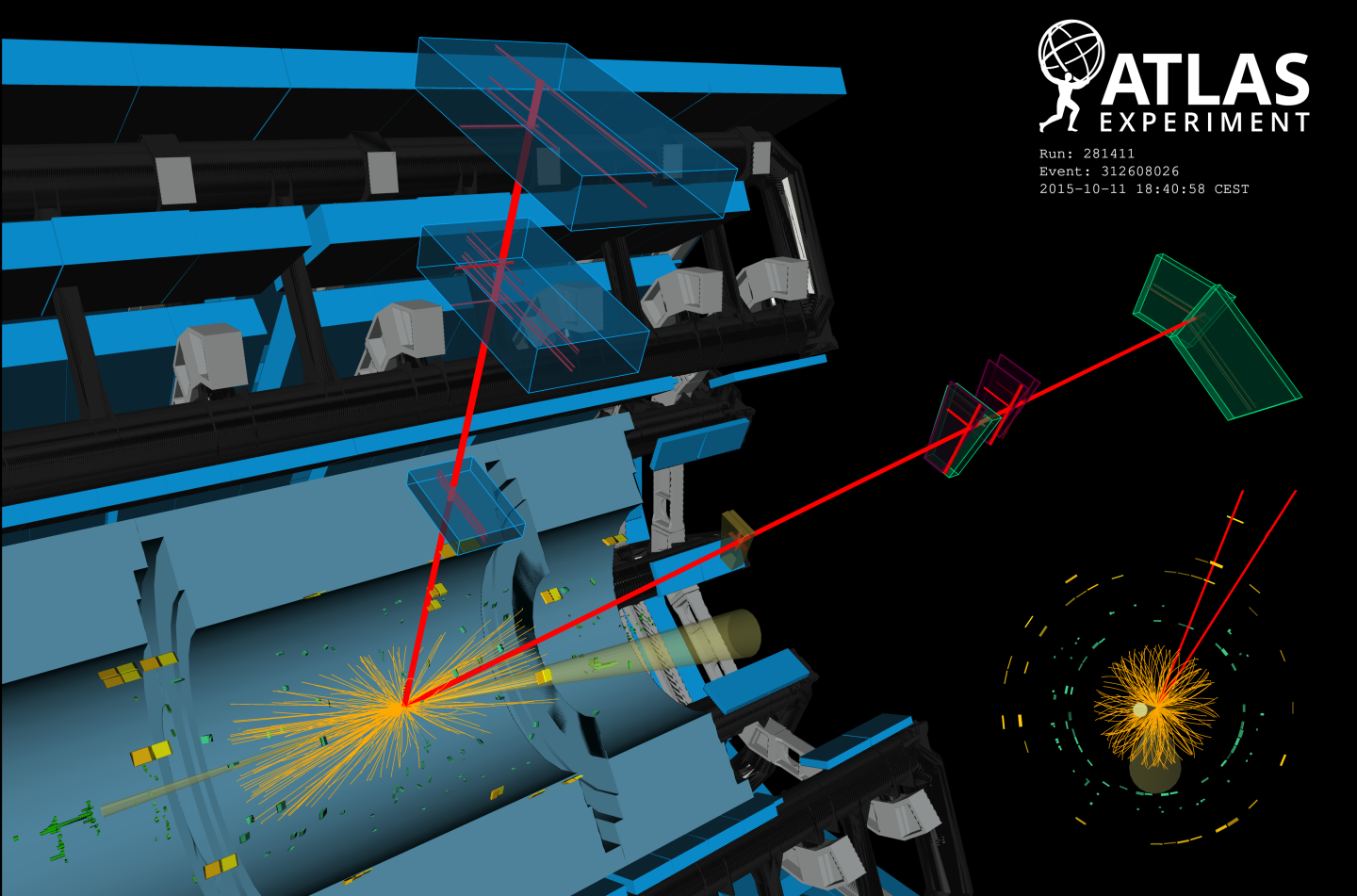The Higgs particle plays a central role in the Standard Model of particle physics, which details the properties of the subatomic particles that make up our universe. Because interactions with the Higgs field are responsible for giving other elementary particles their masses, physicists are very keen to measure how strongly the Higgs boson interacts with other particles.
And now a new analysis, featuring important contributions by scientists at the U.S. Department of Energy’s Lawrence Berkeley National Laboratory (Berkeley Lab) and supercomputer calculations at Berkeley Lab’s National Energy Research Scientific Computing Center (NERSC), strongly supports the hypothesis that the Higgs boson interacts with muons, which are heavier siblings of electrons and the lightest particles yet to reveal evidence for these interactions.
The analysis provides new insight for the origin of mass in particles that make up ordinary matter.
Hongtao Yang, a Chamberlain Fellow in Berkeley Lab’s Physics Division, said the analysis was complicated by a large amount of background signals, or “noise,” in the data that had to be disentangled from the actual signal that researchers were seeking: the Higgs boson’s decay into a pair of muons.
“There was a very tiny signal sitting on a large background,” Yang said. “This was very challenging.”
The unwanted background that researchers had to sort through contributed to about 99.9% of the data, while the actual signal amounted to about 0.1%, Yang noted, or about 1,000 candidate events in which the Higgs boson appeared to decay into a pair of muons.
The new explorations are intended to help physicists test whether the properties of the Higgs boson agree with the Standard Model’s predictions, or point toward theories beyond the Standard Model.
Confirming that the Higgs boson interacts with muons, as expected, is also vital in considering the physics potential of a new type of particle collider that collides muons.
The new analysis that Berkeley Lab researchers contributed to is based on data collected by the ATLAS detector from 2015 to 2018. This analysis supports – at the 95% confidence level – that the muons interact with the Higgs boson, and the measured strength of the interaction is in agreement with the Standard Model prediction. A separate analysis, based on data from the LHC’s CMS detector, provides a less than 1 in 700 chance that the Higgs boson does not interact with muons.
“To tackle this problem, the Berkeley Lab group launched a massive simulation campaign,” Yang said. Its members enlisted computing resources at Cori, a supercomputer at NERSC, and produced about 10 billion simulated particle events in which a Z boson or photon decayed into two muons. Those processes are major contributors to the background, so modeling them properly enabled researchers to get an accurate estimate of the Higgs boson decay signal they were seeking.
“The supercomputer was really impressive – it accomplished such a massive computing task in just a couple of days,” Yang said.
The analysis team evaluated the various methods for producing Higgs bosons at the LHC. Machine-learning techniques were used to separate each type of Higgs boson signature from similar-looking background events to improve the performance of the analysis. There are four production modes that account for Higgs boson production at the LHC.
Evaluating these separate pathways for Higgs boson production led to a higher sensitivity to the muon decay signal the researchers were seeking. Ultimately, the team was able to improve sensitivity to this signal by a factor of about 2.5 compared to an earlier effort that used a smaller set of data. And about 25% of this increased sensitivity was due to the improved background modeling and advancements in the analysis techniques.
While the ATLAS collaboration involves thousands of researchers, and the latest result represents the contributions of a huge international team, “We really played a pivotal role in this effort,” Yang said of the Berkeley Lab group. “We managed to find a very innovative way to tackle this problem.”
He added, “In the early days, people were not very optimistic about this channel” of the Higgs boson decaying into a pair of muons. “We really consolidated the background modeling to make it reliable. We contributed a substantial amount of improvement to the sensitivity. The philosophy of the background modeling we invented here could potentially be beneficial for other LHC searches or measurements as well,” Yang said.
The researchers expect that, based on the sensitivity of these latest analyses, a planned upgrade to the LHC should lead to the confirmation of Higgs boson interactions with muons by achieving a level of scientific certainty known as 5 sigma – which would provide only a 1 in 3.5 million chance that the data is in error. The Berkeley Lab ATLAS group expects to play a role in this future analysis, too.
Other Berkeley Lab scientists participating in the result included: Paolo Calafiura, staff scientist; Fabio Cerutti, senior scientist; Xiangyang Ju, postdoctoral researcher; Zach Marshall, senior scientist; and Miha Muskinja, postdoctoral researcher.
The results have been submitted to the scientific journal Physics Letters B and are available in preprint form at the arXiv.org open-access archive.
Berkeley Lab’s contributions to ATLAS are funded by the U.S. Department of Energy’s Office of Science.
NERSC is a DOE Office of Science user facility.
More
- “CERN experiments announce first indications of a rare Higgs boson process,” CERN, Aug. 3, 2020
- “Measurement of Higgs boson decay to a pair of muons in proton-proton collisions at 13 TeV,” CERN, CMS Physics Analysis Summary
- “A search for the dimuon decay of the Standard Model Higgs boson with the ATLAS detector,” ATLAS collaboration, arXiv.org submission
- “CMS Sees Evidence for the Higgs Boson Decaying Into Muons,” CMS collaboration
- “ATLAS once step closer in the search for rare Higgs boson decays to muons,” ATLAS collaboration


